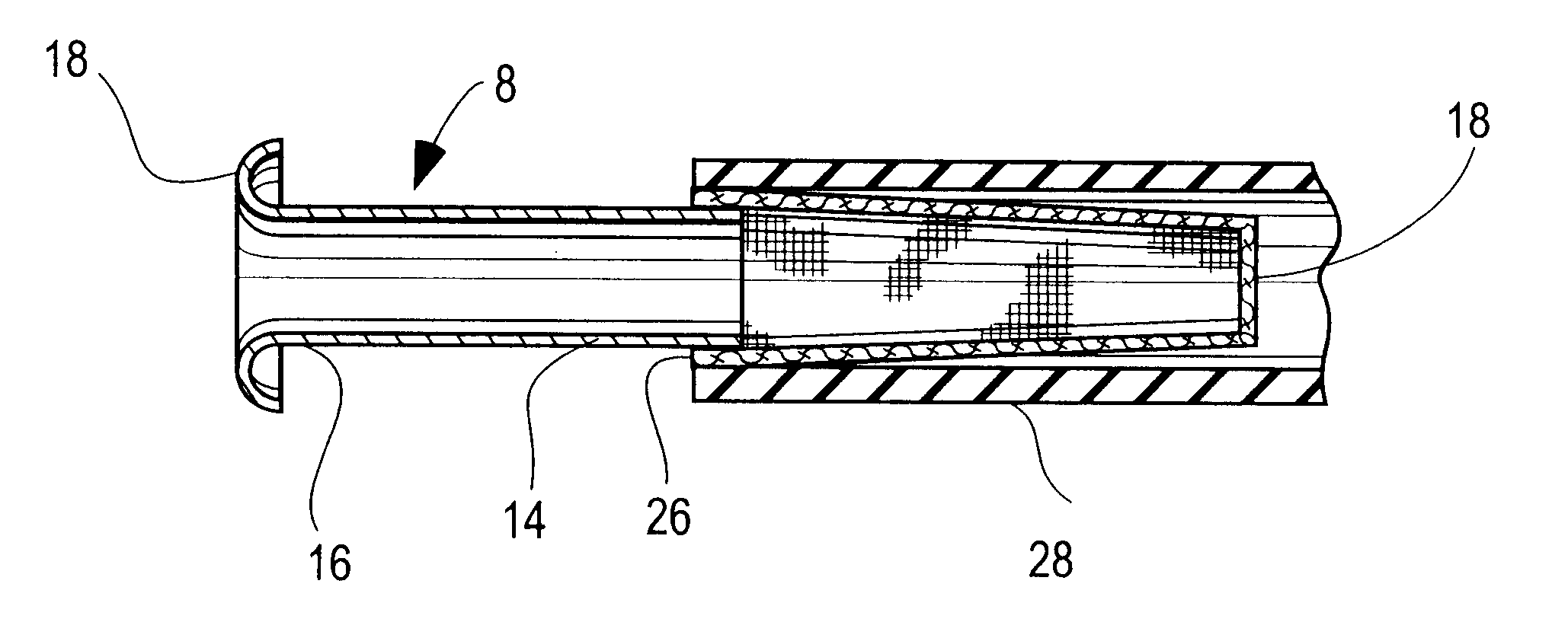Smoke evacuation apparatus
a smoke evacuator and smoke technology, applied in the field of smoke evacuator, can solve the problems of not being optimally efficient in the collection and removal of smoke and surgical debris from the surgical site, operating at less than maximum efficiency in the direction of surgical technique employed, and generating a great deal of smoke and other airborne particulate matter in the vicinity of the surgical site, so as to achieve the effect of efficient collection of smoke and debris and low cos
- Summary
- Abstract
- Description
- Claims
- Application Information
AI Technical Summary
Benefits of technology
Problems solved by technology
Method used
Image
Examples
Embodiment Construction
Referring now to FIG. 1 is a detailed description of the smoke evacuator of the present invention, there is illustrated in that figure a collector 8 embodying the features of the present invention having generally cylindrical walls 10 and a flared horn nozzle portion 12, preferably integral therewith. The body portion of the collector of the present invention includes a distal end 14 adapted to be connected to a source of reduced pressure. As will be appreciated by those skilled in the art, the source of reduced pressure may be a vacuum pump or an exhaust fan to reduce the pressure within the body portion 10. Alternatively, the source of reduced pressure may also be a smoke evacuator of the type described in U.S. Pat. No. 5,243,779.
In accordance with the practice of the invention, the distal portion 16 of the body portion 10 includes a generally hemispherical lip 18 integral with the side walls of the body portion 10 defining a smooth arcuate surface extending from the proximal end ...
PUM
 Login to View More
Login to View More Abstract
Description
Claims
Application Information
 Login to View More
Login to View More - R&D
- Intellectual Property
- Life Sciences
- Materials
- Tech Scout
- Unparalleled Data Quality
- Higher Quality Content
- 60% Fewer Hallucinations
Browse by: Latest US Patents, China's latest patents, Technical Efficacy Thesaurus, Application Domain, Technology Topic, Popular Technical Reports.
© 2025 PatSnap. All rights reserved.Legal|Privacy policy|Modern Slavery Act Transparency Statement|Sitemap|About US| Contact US: help@patsnap.com


